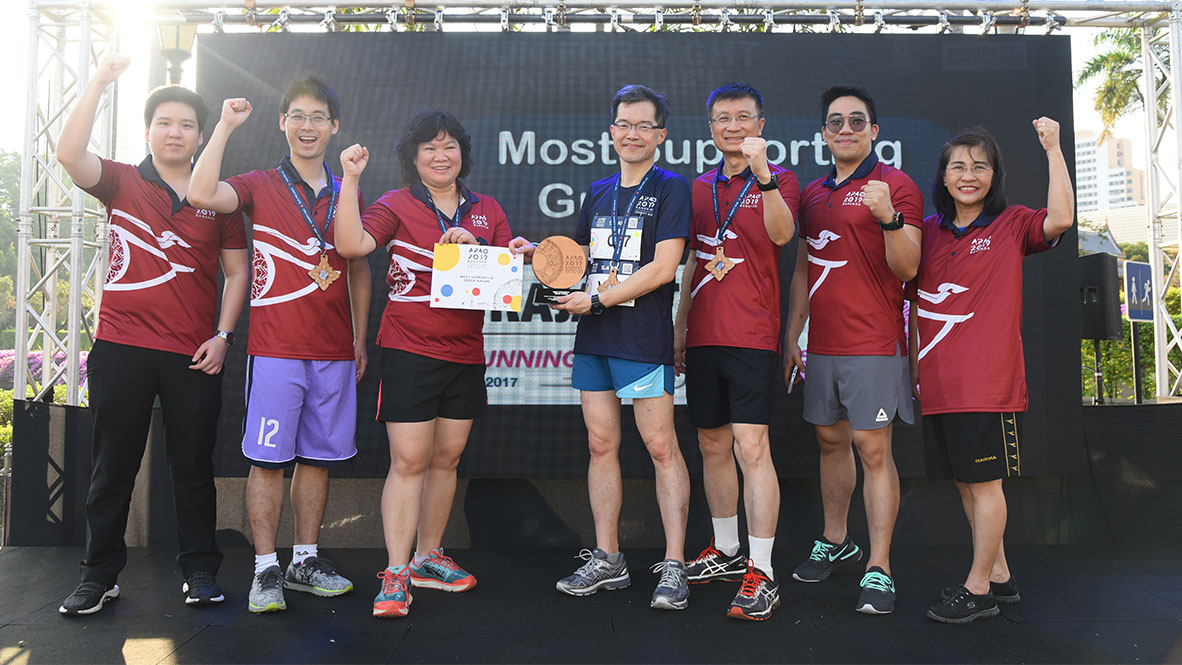A Day 3 APAO-AIOC 2025 session, co-hosted with the AAO, provided a forum for worldwide viewpoints on ophthalmology’s AI-powered future.
Artificial intelligence is turning the world of eye care upside down, but implementation of the technology still varies wildly across global regions.
At the 40th Asia-Pacific Academy of Ophthalmology Congress, held in conjunction with the 83rd Annual Conference of the All India Ophthalmological Society (APAO-AIOC 2025) at the Yashobhoomi Convention Centre in Delhi, India, some of global ophthalmology’s leading voices in artificial intelligence (AI) joined forces to share the latest from their corners of the globe.
From smartphone apps detecting rare eye tumors to algorithms that can go toe-to-toe with specialists in disease diagnosis, the session showed off how artificial intelligence is transforming ophthalmology in significant ways—and how the technology could already be shaping the future of sight worldwide.
The Asia-Pacific AI landscape
Prof. Daniel Ting (Singapore) needed little introduction, as he has become nearly synonymous with artificial intelligence in the field.
He opened the session with an assessment of AI’s evolution from basic machine learning to sophisticated visual language models.
And now that AI has found its way into nearly every aspect of our lives, Prof. Ting noted that the Asia-Pacific region, home to 60% of the world’s population, presents specific implementation challenges—especially in the region’s less developed jurisdictions that could benefit most from its adoption.
“If there’s no telecommunication network, can we actually still deploy AI in a mobile clinic setting?” he asked. “We have to adjust deployment based on the existing infrastructure of the country.”
As for potential applications once policy and accessibility hurdles are cleared, Prof. Ting listed a few familiar faces. “These models offer opportunities for organizing and summarizing electronic medical records, supporting clinical trials and providing clinical decision support tools.”
China’s WeChat meets self-screening
In China, Prof. Haotian Lin and his team have developed a solution for detecting rare ocular surface tumors using its ubiquitous do-it-all chat app, WeChat.
“Traditional manual screening is limited by the cost of manpower and resources, making it unsuitable for detecting such a rare disease,” Prof. Lin told the audience about the motivation for the application. “We believe artificial intelligence technology offers hope for resolving this dilemma.”
His team created a smartphone-based AI system using a WeChat mini-app that allows users to capture images for analysis. The results were quantifiable.
“Under our three-level screen model, we identified 20 cases of malignant eye surface pigmentation from over 250,000 people in the last six months,” Prof. Lin reported. “At a very low cost of manpower and resources, we accomplished what was previously considered impossible.”
AI Applications in India’s healthcare system
Dr. Kim Ramasamy of Aravind Eye Hospital shared India’s experience implementing AI solutions, particularly in diabetic retinopathy screening.
Read More: Kerala’s World-First Comprehensive Government-Backed AI-Powered Eye Screenings
“AI has seen tremendous use in the last decade,” noted Dr. Ramasamy. “It started with the low-hanging fruit—diabetic retinopathy screening—and is now improving the overall process of care.”
The impact on efficiency in one of the world’s largest health care markets has been measurable–and astounding. “Reports are generated in less than a minute, with high consistency, 24/7 availability, and more importantly, infinite scalability,” he said.
Solving India’s rural-urban healthcare gap remains at the top of the agenda for AI. For India’s rural areas, where trained technicians are scarce, Dr. Ramasamy believes AI offers a potential solution. “Can we use AI-enabled systems to triage patients in primary eye care centers?” Dr. Ramasamy asked.
“If we can, then only patients who really have problems will end up coming to tertiary centers,” he said, noting the profound effects this could have on the many regions in India facing increasing shortages in providers of quality health care.
AI governance frameworks in Thailand
As evidenced by innovations on display during this session, AI solutions are coming posthaste. But can governments step out of the way to get the technology to the patients and doctors who need it most?
The integration of AI into medical devices has created regulatory considerations, according to Dr. Paisan Ruamviboonsuk, and he pointed to his native Thailand as a case study for how governments can streamline the delivery of AI-enabled technology while maintaining appropriate safeguards.
“Proper governance ensures ethical, effective AI deployment, patient safety and trust, and mitigates risk bias and errors,” Dr. Ruamviboonsuk explained.
He brought up an illustrative example in Thailand’s regulatory landscape. “If you want to purchase a fundus camera today, they all have AI built in. Once the FDA in Thailand approves the camera, they approve the AI automatically without testing the model.”
The implications of this approach—including those to the downside—are critical to note, Dr. Ruamviboonsuk stated. “Without proper AI governance, we may be prone to cyber attacks or malicious use. Developing clear guidelines for AI use in ophthalmology is very important.”
From academic research to commercial application in the US
Retinopathy of prematurity (ROP) screening was one of AI’s earliest applications in ophthalmology, and Prof. J. Peter Campbell from the United States shared his work developing an AI algorithm for the disease—including the myriad challenges he faced along the way.
“We demonstrated that an algorithm could diagnose Plus disease [a severe form of ROP] as well as or better than international experts,” Prof. Campbell said.
His team’s algorithm can classify ROP disease along a spectrum with accuracy that rivals—and even surpasses—human graders. “The algorithm can classify against the reference standard better than any individual expert,” he shared. “And when physicians used the AI algorithm assistively, we could improve clinical diagnosis of ROP compared to not using the AI,” he noted.
Prof. Campbell, however, echoed one common challenge throughout the symposium—one that we must overcome if AI is to reach its full potential in ophthalmology: the gap between promising research and real-world clinical implementation.
“None of this matters if it can’t be used by patients,” he said. As for a solution, he brought a characteristically American perspective to bridging this gap: the power of the private sector and free market. “The implementation and sustainability really has to have commercial partners because it needs to be scalable and commercially viable long term.”
Editor’s Note: Reporting for this story took place during the 40th Congress of the Asia-Pacific Academy of Ophthalmology (APAO 2025), being held in conjunction with the 83rd Annual Conference of the All India Ophthalmological Society (AIOC 2025) from 3-6 April in New Delhi, India.



